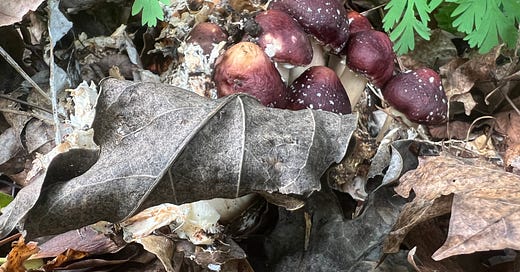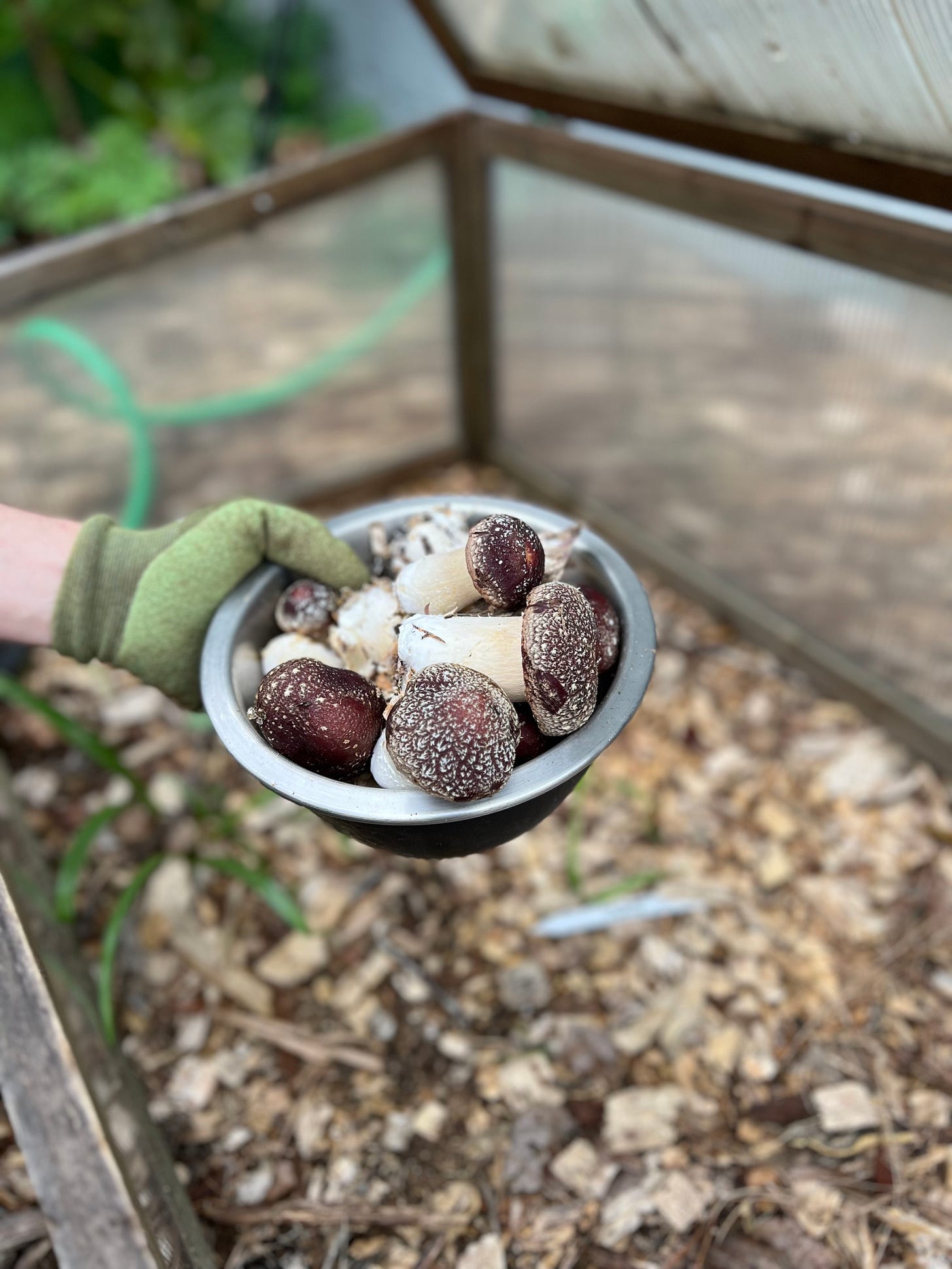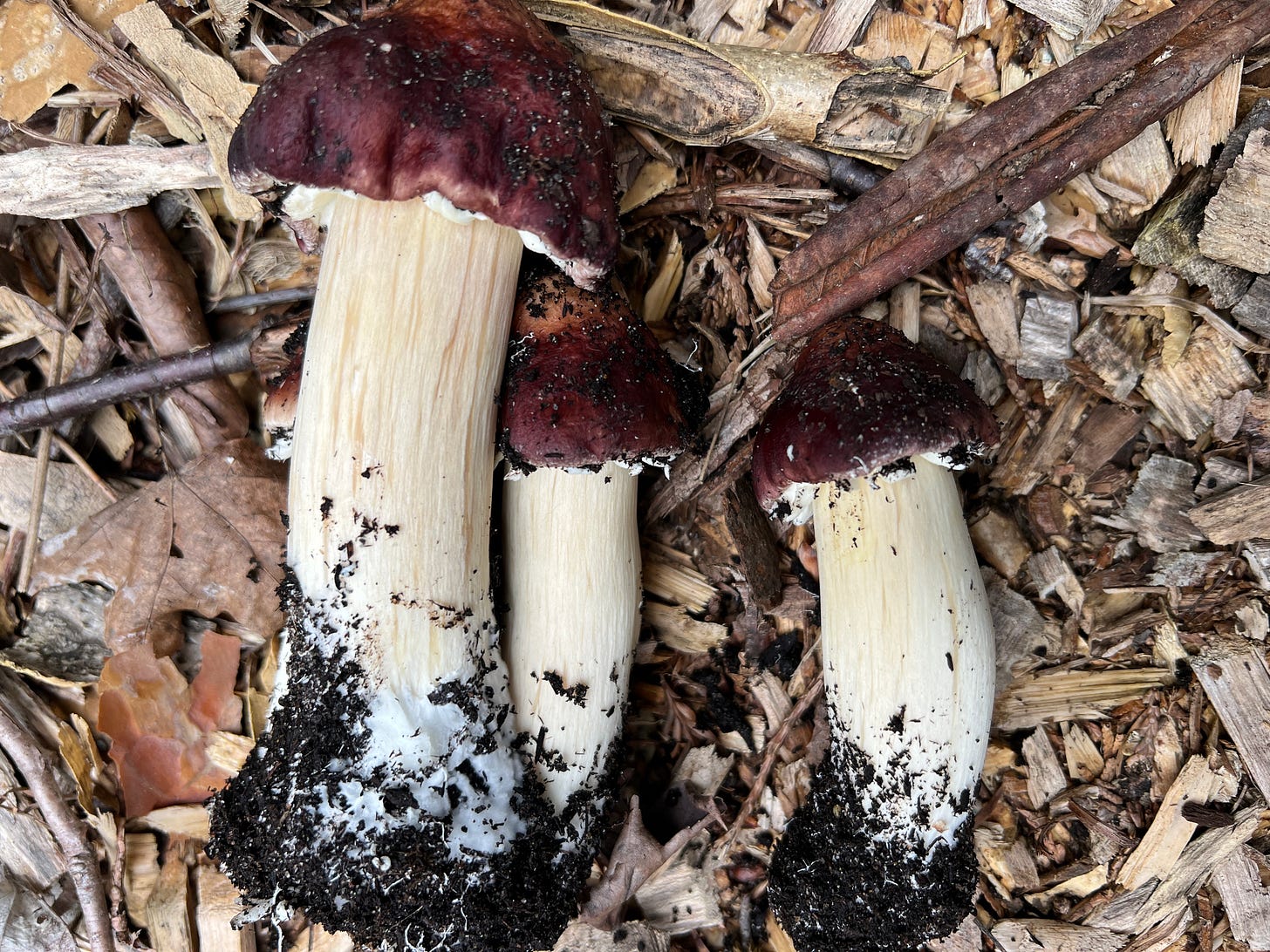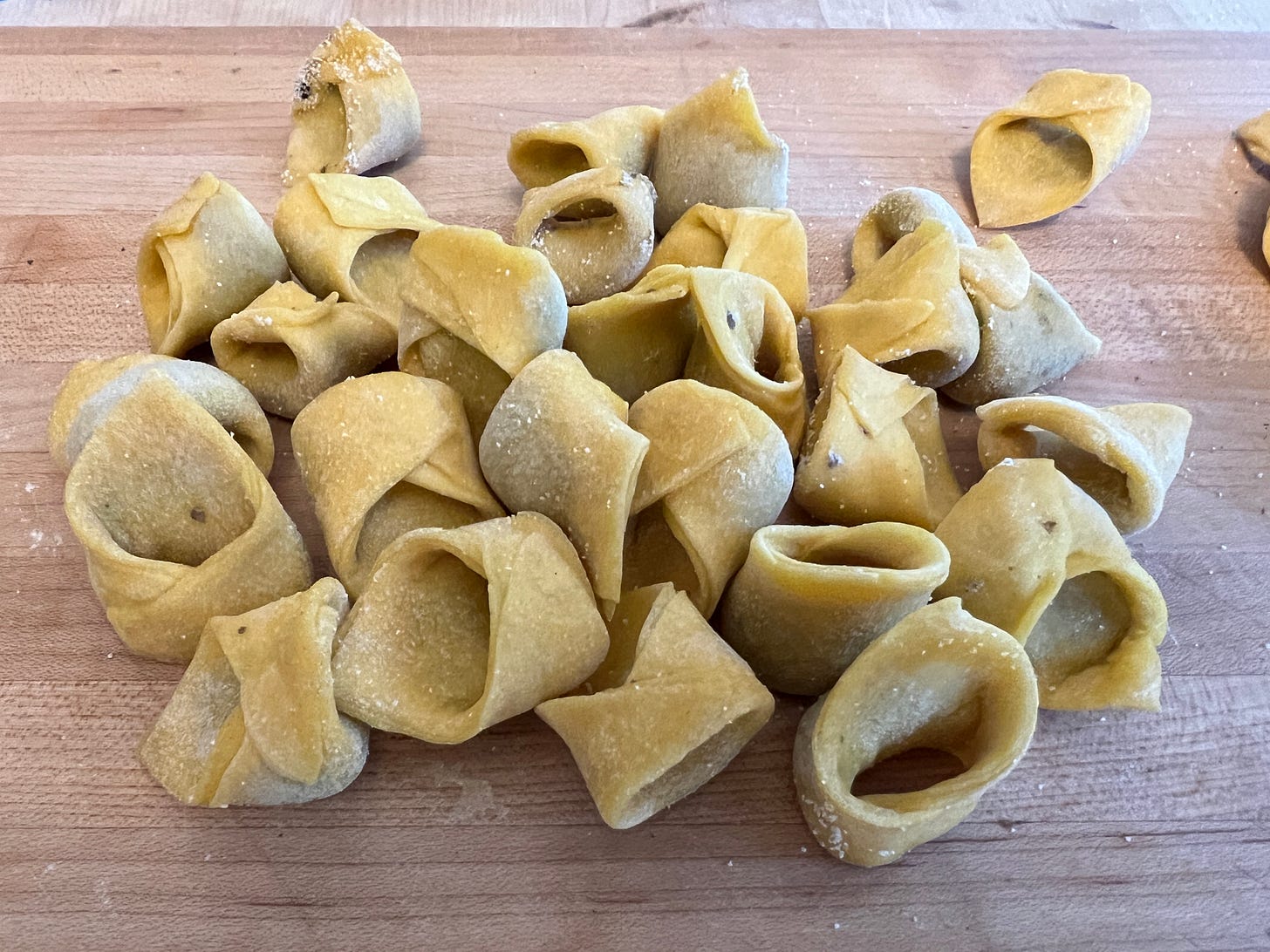Last summer, as we were killing off the grass in our front lawn to create an edible meadow, a friend gave us a gift for the new ecosystem we were coaxing into being. Kevin had bought some wine cap mushroom spawn — more than he could possibly use on his own lawn — and offered us the remaining half of the bag.
Just before we shoveled wood chips over the layers of cardboard and compost we had laid down, I scattered flecks of inoculated sawdust along the shady north side of the house. My hope was to have a crop of mushrooms by fall.
But the summer turned hot, and the heat stuck around. Although I sprayed the patch with water now and again, the wood chips grew dry and brittle. In the fall, a couple of plump, burgundy-capped mushrooms appeared just under the faucet where I had attached a watering hose. I took a photo for Instagram, naturally, then set to worrying. What if these weren't wine caps? (Note: I was being an idiot. Wine caps are great for first-timers like me because they’re so distinctive, with no similar-looking poisonous fungi.) I dithered for so long that by the time I decided to sauté the damn things, they'd gone all slimy.
Then the rains came. Our late, chilly winter finally ended in mid-April with a weekend-long heat wave that inspired all the fungi lurking in Portland’s wood chips to show themselves. Whorled clusters of Palomino cup fungi sprouted up all over our lawn. Foot-wide patches of yellow dog vomit slime mold erupted, interspersed with fairy mushrooms striped with black-and-white ridges. Some people I know even harvested morels from their lawns.
At the beginning of May, a three-foot band of dark red domes—some the size of raspberries, others grapefruit—popped up overnight on the north side of our house. Not a failed crop at all! I giddily harvested two pounds' worth of wine cap mushrooms in just a few minutes.
By the time I discovered this surprise harvest, though, I'd begun thinking of the edible mushrooms as a side benefit. Each time I had dug into the wood chips that fall and winter, I'd spotted a more beneficial presence in my edible prairie: a two-inch-thick, marshmallow-like layer of mycelium growing underneath the surface. As it has spread through the soil, this mycelium—the bulk of the wine cap colony—has inoculated my lawn with its own intelligence, perhaps even bringing the plants, bacteria, and other underground creatures into closer communion.
Mycelium are made up of billions of fine white filaments, called hyphae, that weave through the wood chips and soil, feeding on decaying matter. As it spreads, pursuing its appetites, mycelium can form mycorrhizal relationships with the roots of trees and shrubs so they can exchange carbon and nutrients. Some scientists call this network of relationships the wood wide web. A forest ecologist named Suzanne Simard has spent her career researching how mycorrhizal networks transmit messages from plant to plant, even keeping a mother tree connected to her seedlings.
The more I have read about the fungal world, the more its diffuse, slow-growing intelligence seems like a productive model for my own creative life. During the 20 years I wrote for newspapers, my career was dominated by an ever-faster churn of ideas and stories. The more frequently my name appeared online, the more successful I felt. These days, my creative life looks more like mycelium: spreading through the subsurface, quietly digesting and plotting, sending up a few fruits for other people to find only when the right conditions appear.
Or at least that's what I tell myself when I forget to post on Instagram.
This spring I was determined to make the most of this new gift from the lawn. I tossed the first batch of wine caps into a sauté pan, where high heat brought out their delicate, vegetal flavor without dispelling the stems’ gentle crunch. The burgundy caps kept sprouting on the lawn. By mid-May we were preparing to go on vacation for two weeks, so I gathered a giant heap of mushrooms, chopped them finely, and sautéed them down with shallots, green garlic, and summer savory to make a pint of mushroom duxelles.
Once I returned to Portland, I pulled the duxelles from the freezer, mixed it with ricotta and Parmesan, and used it to fill enough tortellini and ravioli for several meals. The wine cap filling is so meaty, so dense with flavor, that a little butter and parmesan is all the sauce the pasta needs.
The mushroom patch dried up during our trip, and after our return I cleared away dozens of withered wine caps, composting almost as many as I had cooked before I left. The wine caps are gone for the season, perhaps the year. But it’s comforting to know that the organism remains just beneath the surface of our lawn, doing its work, waiting for the rains to show itself again.









This is such a sensual article about the growth of Mushrooms and how they add to our ecosystems. The food sounds yummy.
Oh gosh, I would be worried about eating mushrooms from the yard, too. Excited to hear about your summer garden!